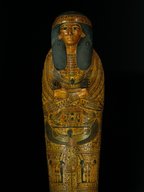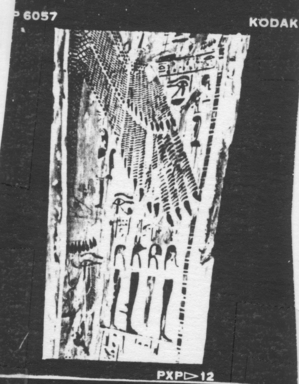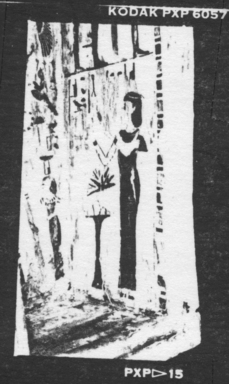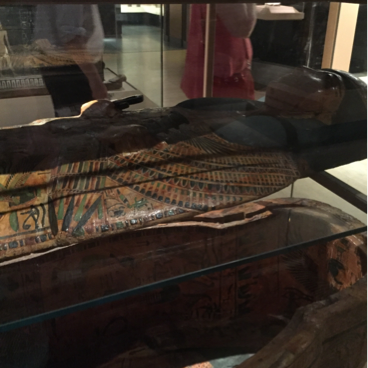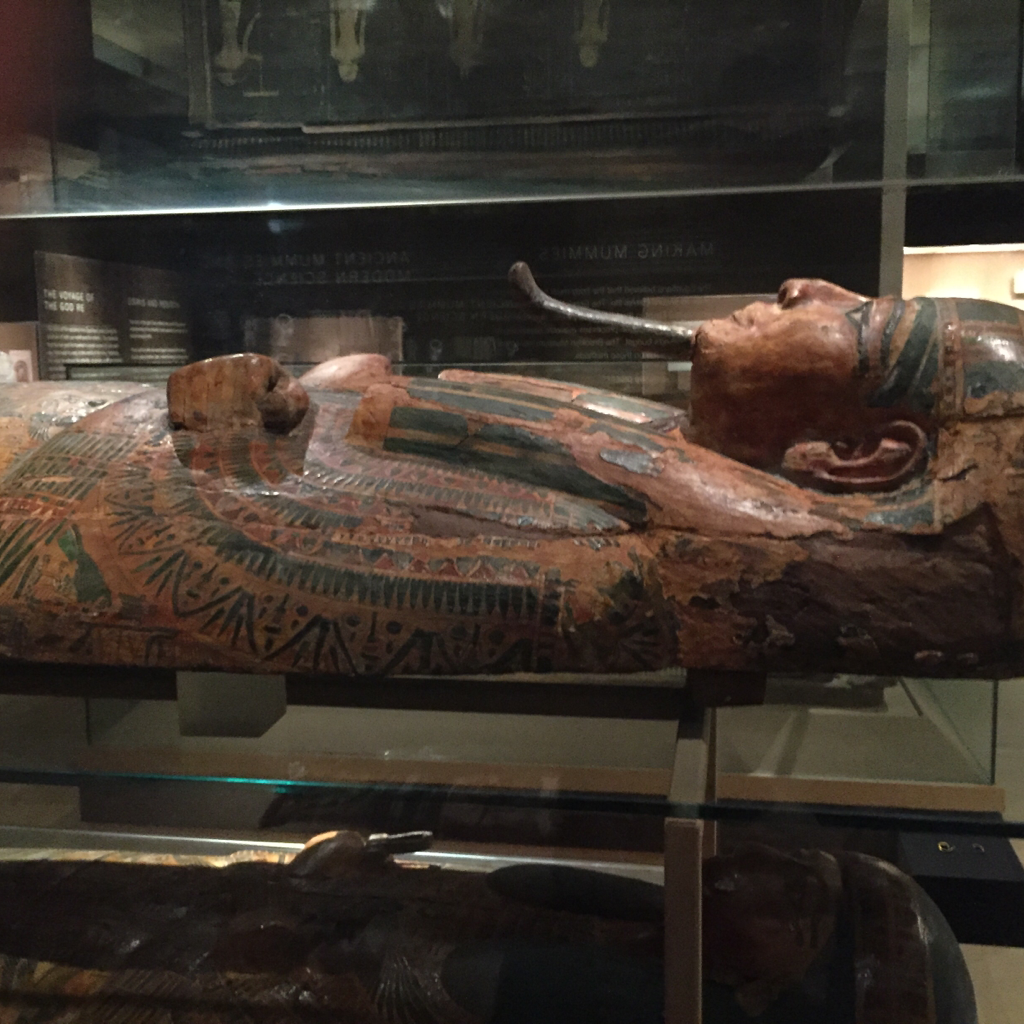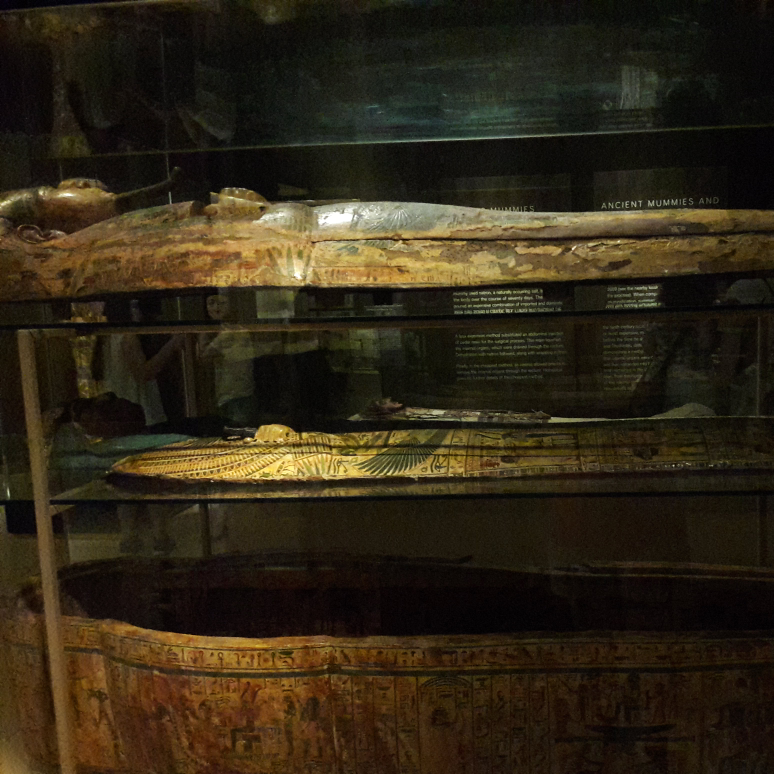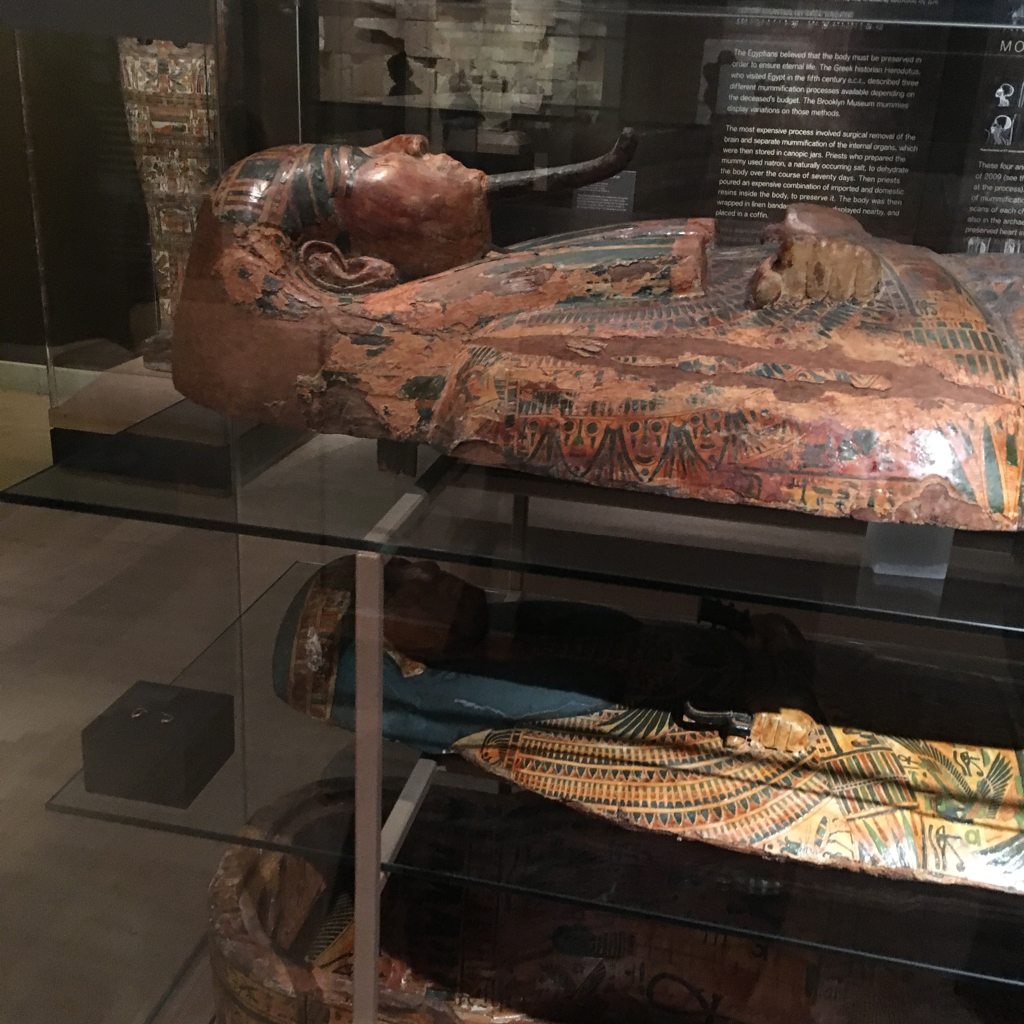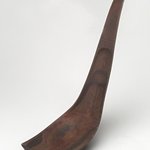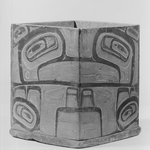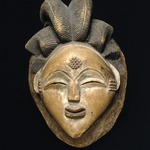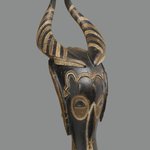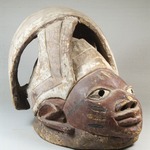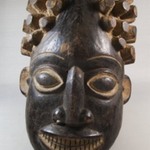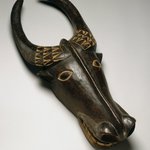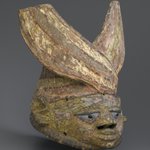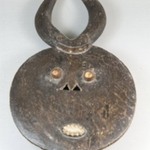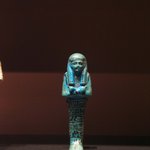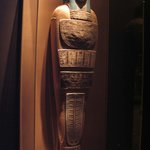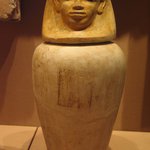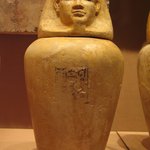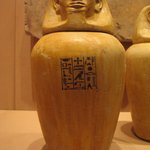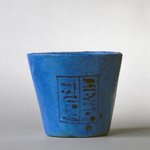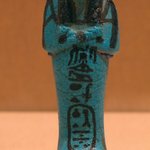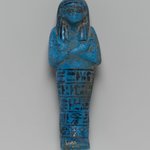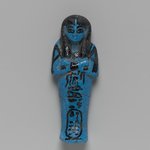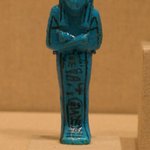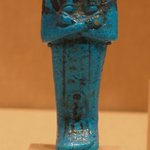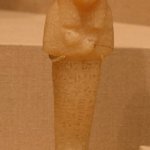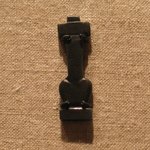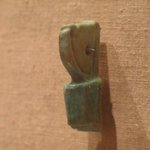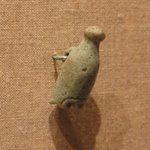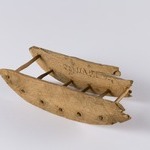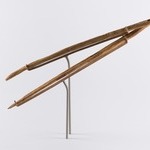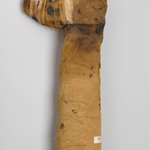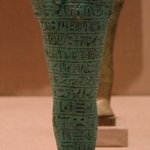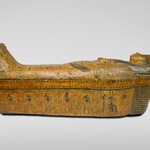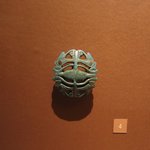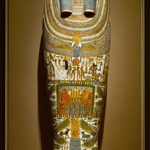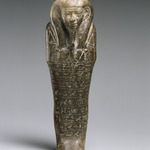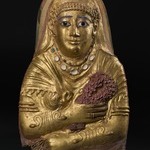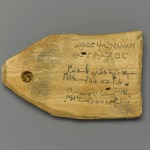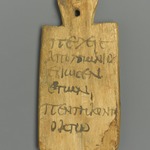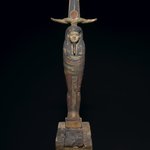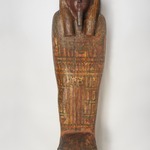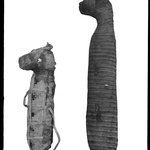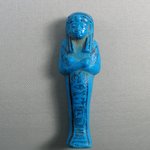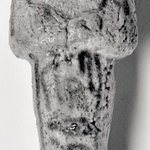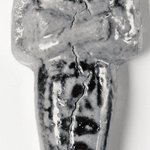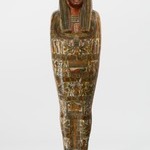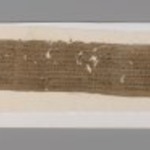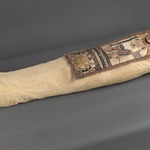

Coffin and Mummy Board of Pasebakhaemipet, ca. 1075–945 B.C.E. Wood, pigment, 12 5/8 x 21 5/8 x 76 3/8 in. (32 x 55 x 194 cm). Brooklyn Museum, Charles Edwin Wilbour Fund, 08.480.2a-c. Creative Commons-BY (Photo: Brooklyn Museum, 08.480.2a-c_inner_detail_SL1.jpg)
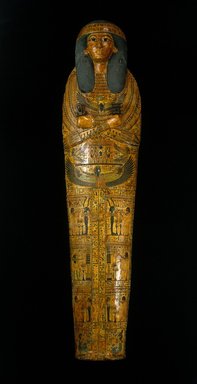
Coffin and Mummy Board of Pasebakhaemipet, ca. 1075–945 B.C.E. Wood, pigment, 12 5/8 x 21 5/8 x 76 3/8 in. (32 x 55 x 194 cm). Brooklyn Museum, Charles Edwin Wilbour Fund, 08.480.2a-c. Creative Commons-BY (Photo: Brooklyn Museum, 08.480.2a-c_inner_SL1.jpg)
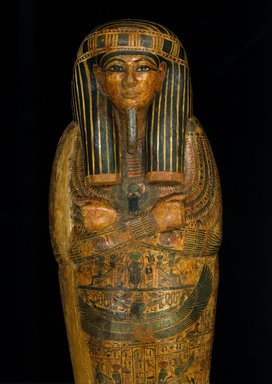
Coffin and Mummy Board of Pasebakhaemipet, ca. 1075–945 B.C.E. Wood, pigment, 12 5/8 x 21 5/8 x 76 3/8 in. (32 x 55 x 194 cm). Brooklyn Museum, Charles Edwin Wilbour Fund, 08.480.2a-c. Creative Commons-BY (Photo: Brooklyn Museum, 08.480.2a-c_outer_detail_SL1.jpg)
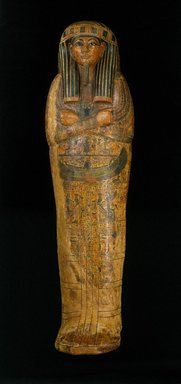
Coffin and Mummy Board of Pasebakhaemipet, ca. 1075–945 B.C.E. Wood, pigment, 12 5/8 x 21 5/8 x 76 3/8 in. (32 x 55 x 194 cm). Brooklyn Museum, Charles Edwin Wilbour Fund, 08.480.2a-c. Creative Commons-BY (Photo: Brooklyn Museum, 08.480.2a-c_outer_SL1.jpg)

Coffin and Mummy Board of Pasebakhaemipet, ca. 1075–945 B.C.E. Wood, pigment, 12 5/8 x 21 5/8 x 76 3/8 in. (32 x 55 x 194 cm). Brooklyn Museum, Charles Edwin Wilbour Fund, 08.480.2a-c. Creative Commons-BY (Photo: Brooklyn Museum, CUR.08.480.2a-c_view1_mummychamber.jpg)
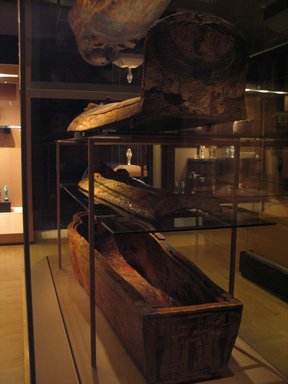
Coffin and Mummy Board of Pasebakhaemipet, ca. 1075–945 B.C.E. Wood, pigment, 12 5/8 x 21 5/8 x 76 3/8 in. (32 x 55 x 194 cm). Brooklyn Museum, Charles Edwin Wilbour Fund, 08.480.2a-c. Creative Commons-BY (Photo: Brooklyn Museum, CUR.08.480.2a-c_view2_mummychamber.jpg)

Coffin and Mummy Board of Pasebakhaemipet, ca. 1075–945 B.C.E. Wood, pigment, 12 5/8 x 21 5/8 x 76 3/8 in. (32 x 55 x 194 cm). Brooklyn Museum, Charles Edwin Wilbour Fund, 08.480.2a-c. Creative Commons-BY (Photo: Brooklyn Museum, CUR.08.480.2a-c_view3_mummychamber.jpg)
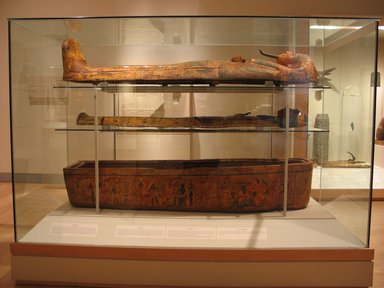
Coffin and Mummy Board of Pasebakhaemipet, ca. 1075–945 B.C.E. Wood, pigment, 12 5/8 x 21 5/8 x 76 3/8 in. (32 x 55 x 194 cm). Brooklyn Museum, Charles Edwin Wilbour Fund, 08.480.2a-c. Creative Commons-BY (Photo: Brooklyn Museum, CUR.08.480.2a-c_wwgA-2.jpg)
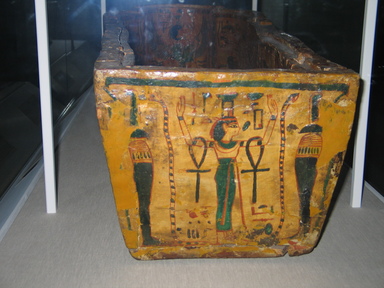
Coffin and Mummy Board of Pasebakhaemipet, ca. 1075–945 B.C.E. Wood, pigment, 12 5/8 x 21 5/8 x 76 3/8 in. (32 x 55 x 194 cm). Brooklyn Museum, Charles Edwin Wilbour Fund, 08.480.2a-c. Creative Commons-BY (Photo: , CUR.08.480.2c_eXterior_view01.jpg)
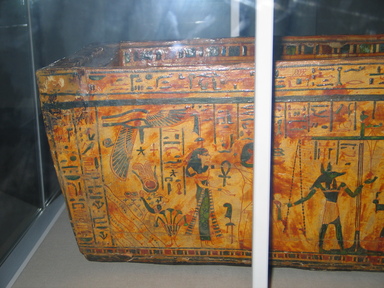
Coffin and Mummy Board of Pasebakhaemipet, ca. 1075–945 B.C.E. Wood, pigment, 12 5/8 x 21 5/8 x 76 3/8 in. (32 x 55 x 194 cm). Brooklyn Museum, Charles Edwin Wilbour Fund, 08.480.2a-c. Creative Commons-BY (Photo: , CUR.08.480.2c_eXterior_view02.jpg)
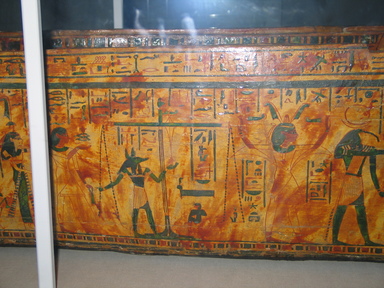
Coffin and Mummy Board of Pasebakhaemipet, ca. 1075–945 B.C.E. Wood, pigment, 12 5/8 x 21 5/8 x 76 3/8 in. (32 x 55 x 194 cm). Brooklyn Museum, Charles Edwin Wilbour Fund, 08.480.2a-c. Creative Commons-BY (Photo: , CUR.08.480.2c_eXterior_view03.jpg)
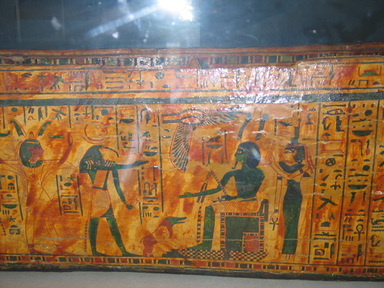
Coffin and Mummy Board of Pasebakhaemipet, ca. 1075–945 B.C.E. Wood, pigment, 12 5/8 x 21 5/8 x 76 3/8 in. (32 x 55 x 194 cm). Brooklyn Museum, Charles Edwin Wilbour Fund, 08.480.2a-c. Creative Commons-BY (Photo: , CUR.08.480.2c_eXterior_view04.jpg)
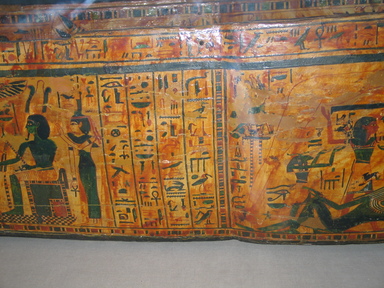
Coffin and Mummy Board of Pasebakhaemipet, ca. 1075–945 B.C.E. Wood, pigment, 12 5/8 x 21 5/8 x 76 3/8 in. (32 x 55 x 194 cm). Brooklyn Museum, Charles Edwin Wilbour Fund, 08.480.2a-c. Creative Commons-BY (Photo: , CUR.08.480.2c_eXterior_view05.jpg)

Coffin and Mummy Board of Pasebakhaemipet, ca. 1075–945 B.C.E. Wood, pigment, 12 5/8 x 21 5/8 x 76 3/8 in. (32 x 55 x 194 cm). Brooklyn Museum, Charles Edwin Wilbour Fund, 08.480.2a-c. Creative Commons-BY (Photo: , CUR.08.480.2c_eXterior_view06.jpg)
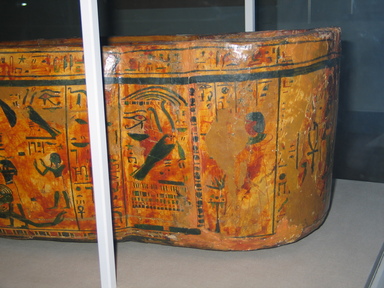
Coffin and Mummy Board of Pasebakhaemipet, ca. 1075–945 B.C.E. Wood, pigment, 12 5/8 x 21 5/8 x 76 3/8 in. (32 x 55 x 194 cm). Brooklyn Museum, Charles Edwin Wilbour Fund, 08.480.2a-c. Creative Commons-BY (Photo: , CUR.08.480.2c_eXterior_view07.jpg)
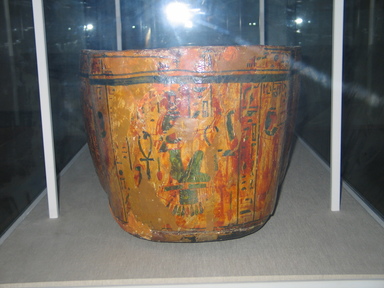
Coffin and Mummy Board of Pasebakhaemipet, ca. 1075–945 B.C.E. Wood, pigment, 12 5/8 x 21 5/8 x 76 3/8 in. (32 x 55 x 194 cm). Brooklyn Museum, Charles Edwin Wilbour Fund, 08.480.2a-c. Creative Commons-BY (Photo: , CUR.08.480.2c_eXterior_view08.jpg)
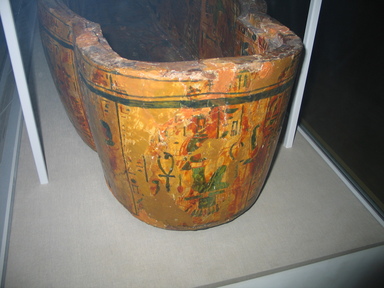
Coffin and Mummy Board of Pasebakhaemipet, ca. 1075–945 B.C.E. Wood, pigment, 12 5/8 x 21 5/8 x 76 3/8 in. (32 x 55 x 194 cm). Brooklyn Museum, Charles Edwin Wilbour Fund, 08.480.2a-c. Creative Commons-BY (Photo: , CUR.08.480.2c_eXterior_view09.jpg)
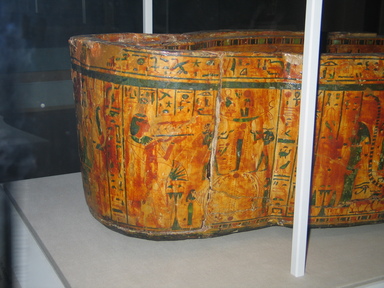
Coffin and Mummy Board of Pasebakhaemipet, ca. 1075–945 B.C.E. Wood, pigment, 12 5/8 x 21 5/8 x 76 3/8 in. (32 x 55 x 194 cm). Brooklyn Museum, Charles Edwin Wilbour Fund, 08.480.2a-c. Creative Commons-BY (Photo: , CUR.08.480.2c_eXterior_view10.jpg)
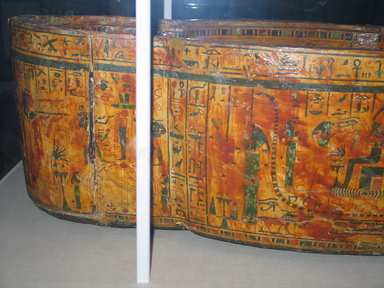
Coffin and Mummy Board of Pasebakhaemipet, ca. 1075–945 B.C.E. Wood, pigment, 12 5/8 x 21 5/8 x 76 3/8 in. (32 x 55 x 194 cm). Brooklyn Museum, Charles Edwin Wilbour Fund, 08.480.2a-c. Creative Commons-BY (Photo: , CUR.08.480.2c_eXterior_view11.jpg)
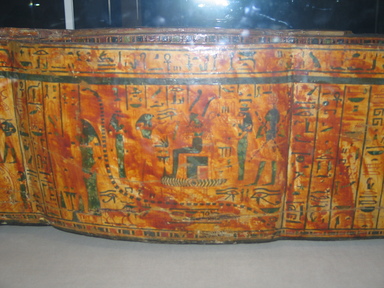
Coffin and Mummy Board of Pasebakhaemipet, ca. 1075–945 B.C.E. Wood, pigment, 12 5/8 x 21 5/8 x 76 3/8 in. (32 x 55 x 194 cm). Brooklyn Museum, Charles Edwin Wilbour Fund, 08.480.2a-c. Creative Commons-BY (Photo: , CUR.08.480.2c_eXterior_view12.jpg)
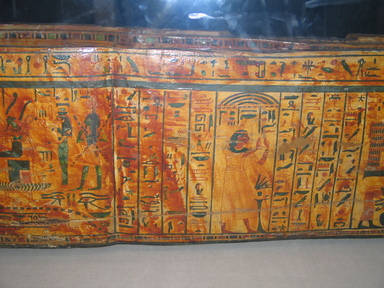
Coffin and Mummy Board of Pasebakhaemipet, ca. 1075–945 B.C.E. Wood, pigment, 12 5/8 x 21 5/8 x 76 3/8 in. (32 x 55 x 194 cm). Brooklyn Museum, Charles Edwin Wilbour Fund, 08.480.2a-c. Creative Commons-BY (Photo: , CUR.08.480.2c_eXterior_view13.jpg)
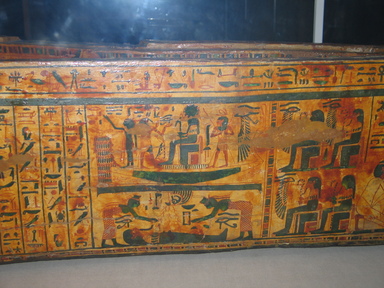
Coffin and Mummy Board of Pasebakhaemipet, ca. 1075–945 B.C.E. Wood, pigment, 12 5/8 x 21 5/8 x 76 3/8 in. (32 x 55 x 194 cm). Brooklyn Museum, Charles Edwin Wilbour Fund, 08.480.2a-c. Creative Commons-BY (Photo: , CUR.08.480.2c_eXterior_view14.jpg)
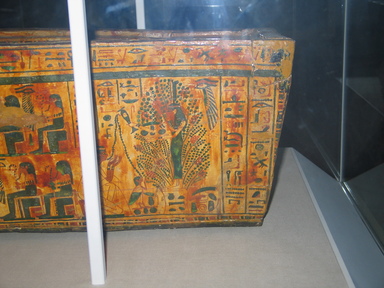
Coffin and Mummy Board of Pasebakhaemipet, ca. 1075–945 B.C.E. Wood, pigment, 12 5/8 x 21 5/8 x 76 3/8 in. (32 x 55 x 194 cm). Brooklyn Museum, Charles Edwin Wilbour Fund, 08.480.2a-c. Creative Commons-BY (Photo: , CUR.08.480.2c_eXterior_view15.jpg)

Coffin and Mummy Board of Pasebakhaemipet, ca. 1075–945 B.C.E. Wood, pigment, 12 5/8 x 21 5/8 x 76 3/8 in. (32 x 55 x 194 cm). Brooklyn Museum, Charles Edwin Wilbour Fund, 08.480.2a-c. Creative Commons-BY (Photo: , CUR.08.480.2c_interior_view01.jpg)

Coffin and Mummy Board of Pasebakhaemipet, ca. 1075–945 B.C.E. Wood, pigment, 12 5/8 x 21 5/8 x 76 3/8 in. (32 x 55 x 194 cm). Brooklyn Museum, Charles Edwin Wilbour Fund, 08.480.2a-c. Creative Commons-BY (Photo: , CUR.08.480.2c_interior_view02.jpg)
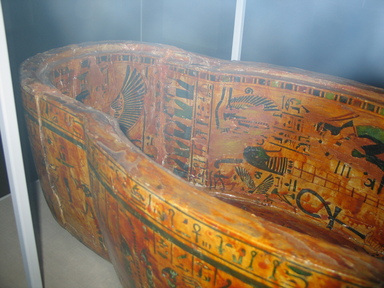
Coffin and Mummy Board of Pasebakhaemipet, ca. 1075–945 B.C.E. Wood, pigment, 12 5/8 x 21 5/8 x 76 3/8 in. (32 x 55 x 194 cm). Brooklyn Museum, Charles Edwin Wilbour Fund, 08.480.2a-c. Creative Commons-BY (Photo: , CUR.08.480.2c_interior_view03.jpg)

Coffin and Mummy Board of Pasebakhaemipet, ca. 1075–945 B.C.E. Wood, pigment, 12 5/8 x 21 5/8 x 76 3/8 in. (32 x 55 x 194 cm). Brooklyn Museum, Charles Edwin Wilbour Fund, 08.480.2a-c. Creative Commons-BY (Photo: , CUR.08.480.2c_interior_view04.jpg)

Coffin and Mummy Board of Pasebakhaemipet, ca. 1075–945 B.C.E. Wood, pigment, 12 5/8 x 21 5/8 x 76 3/8 in. (32 x 55 x 194 cm). Brooklyn Museum, Charles Edwin Wilbour Fund, 08.480.2a-c. Creative Commons-BY (Photo: , CUR.08.480.2c_interior_view05.jpg)

Coffin and Mummy Board of Pasebakhaemipet, ca. 1075–945 B.C.E. Wood, pigment, 12 5/8 x 21 5/8 x 76 3/8 in. (32 x 55 x 194 cm). Brooklyn Museum, Charles Edwin Wilbour Fund, 08.480.2a-c. Creative Commons-BY (Photo: , CUR.08.480.2c_interior_view06.jpg)
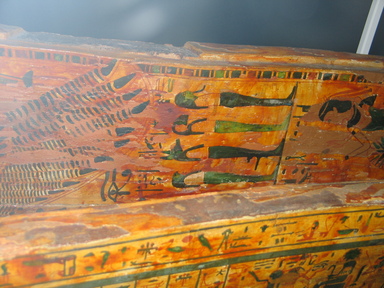
Coffin and Mummy Board of Pasebakhaemipet, ca. 1075–945 B.C.E. Wood, pigment, 12 5/8 x 21 5/8 x 76 3/8 in. (32 x 55 x 194 cm). Brooklyn Museum, Charles Edwin Wilbour Fund, 08.480.2a-c. Creative Commons-BY (Photo: , CUR.08.480.2c_interior_view07.jpg)
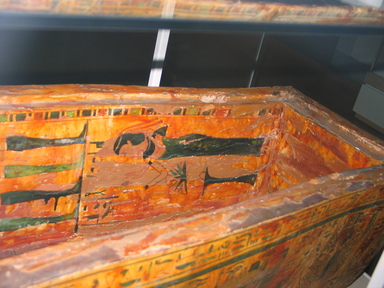
Coffin and Mummy Board of Pasebakhaemipet, ca. 1075–945 B.C.E. Wood, pigment, 12 5/8 x 21 5/8 x 76 3/8 in. (32 x 55 x 194 cm). Brooklyn Museum, Charles Edwin Wilbour Fund, 08.480.2a-c. Creative Commons-BY (Photo: , CUR.08.480.2c_interior_view08.jpg)
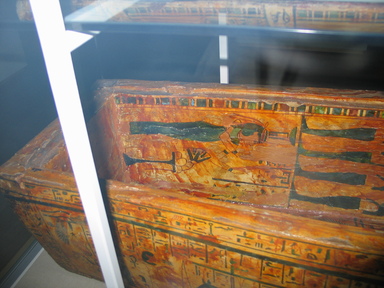
Coffin and Mummy Board of Pasebakhaemipet, ca. 1075–945 B.C.E. Wood, pigment, 12 5/8 x 21 5/8 x 76 3/8 in. (32 x 55 x 194 cm). Brooklyn Museum, Charles Edwin Wilbour Fund, 08.480.2a-c. Creative Commons-BY (Photo: , CUR.08.480.2c_interior_view09.jpg)
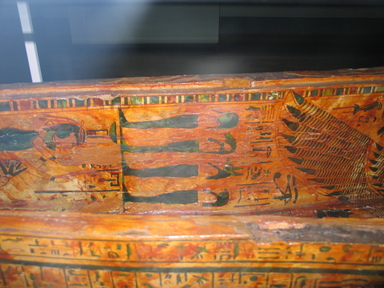
Coffin and Mummy Board of Pasebakhaemipet, ca. 1075–945 B.C.E. Wood, pigment, 12 5/8 x 21 5/8 x 76 3/8 in. (32 x 55 x 194 cm). Brooklyn Museum, Charles Edwin Wilbour Fund, 08.480.2a-c. Creative Commons-BY (Photo: , CUR.08.480.2c_interior_view10.jpg)

Coffin and Mummy Board of Pasebakhaemipet, ca. 1075–945 B.C.E. Wood, pigment, 12 5/8 x 21 5/8 x 76 3/8 in. (32 x 55 x 194 cm). Brooklyn Museum, Charles Edwin Wilbour Fund, 08.480.2a-c. Creative Commons-BY (Photo: , CUR.08.480.2c_interior_view11.jpg)

Coffin and Mummy Board of Pasebakhaemipet, ca. 1075–945 B.C.E. Wood, pigment, 12 5/8 x 21 5/8 x 76 3/8 in. (32 x 55 x 194 cm). Brooklyn Museum, Charles Edwin Wilbour Fund, 08.480.2a-c. Creative Commons-BY (Photo: , CUR.08.480.2c_interior_view12.jpg)
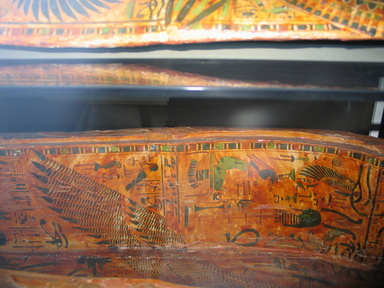
Coffin and Mummy Board of Pasebakhaemipet, ca. 1075–945 B.C.E. Wood, pigment, 12 5/8 x 21 5/8 x 76 3/8 in. (32 x 55 x 194 cm). Brooklyn Museum, Charles Edwin Wilbour Fund, 08.480.2a-c. Creative Commons-BY (Photo: , CUR.08.480.2c_interior_view13.jpg)
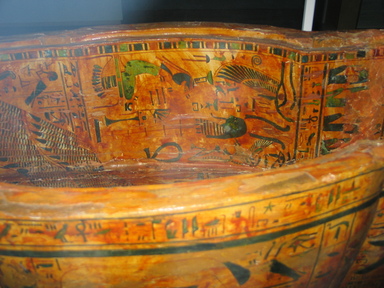
Coffin and Mummy Board of Pasebakhaemipet, ca. 1075–945 B.C.E. Wood, pigment, 12 5/8 x 21 5/8 x 76 3/8 in. (32 x 55 x 194 cm). Brooklyn Museum, Charles Edwin Wilbour Fund, 08.480.2a-c. Creative Commons-BY (Photo: , CUR.08.480.2c_interior_view14.jpg)

Coffin and Mummy Board of Pasebakhaemipet, ca. 1075–945 B.C.E. Wood, pigment, 12 5/8 x 21 5/8 x 76 3/8 in. (32 x 55 x 194 cm). Brooklyn Museum, Charles Edwin Wilbour Fund, 08.480.2a-c. Creative Commons-BY (Photo: , CUR.08.480.2c_interior_view15.jpg)
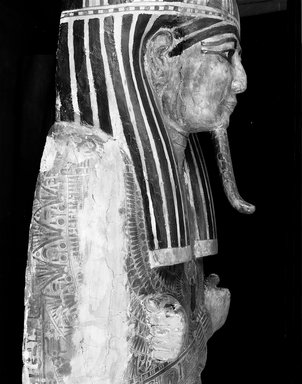
Coffin and Mummy Board of Pasebakhaemipet, ca. 1075–945 B.C.E. Wood, pigment, 12 5/8 x 21 5/8 x 76 3/8 in. (32 x 55 x 194 cm). Brooklyn Museum, Charles Edwin Wilbour Fund, 08.480.2a-c. Creative Commons-BY (Photo: Brooklyn Museum, CUR.08.480.2a_negA_bw.jpg)

Coffin and Mummy Board of Pasebakhaemipet, ca. 1075–945 B.C.E. Wood, pigment, 12 5/8 x 21 5/8 x 76 3/8 in. (32 x 55 x 194 cm). Brooklyn Museum, Charles Edwin Wilbour Fund, 08.480.2a-c. Creative Commons-BY (Photo: Brooklyn Museum, CUR.08.480.2a_negB_bw.jpg)
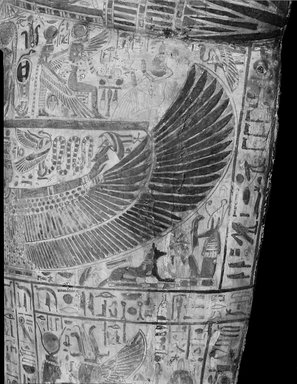
Coffin and Mummy Board of Pasebakhaemipet, ca. 1075–945 B.C.E. Wood, pigment, 12 5/8 x 21 5/8 x 76 3/8 in. (32 x 55 x 194 cm). Brooklyn Museum, Charles Edwin Wilbour Fund, 08.480.2a-c. Creative Commons-BY (Photo: Brooklyn Museum, CUR.08.480.2a_negC_bw.jpg)
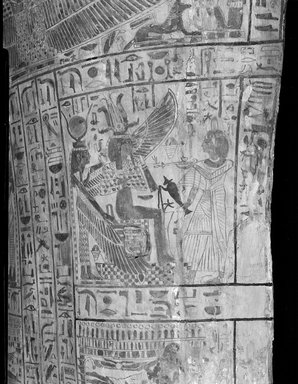
Coffin and Mummy Board of Pasebakhaemipet, ca. 1075–945 B.C.E. Wood, pigment, 12 5/8 x 21 5/8 x 76 3/8 in. (32 x 55 x 194 cm). Brooklyn Museum, Charles Edwin Wilbour Fund, 08.480.2a-c. Creative Commons-BY (Photo: Brooklyn Museum, CUR.08.480.2a_negD_bw.jpg)
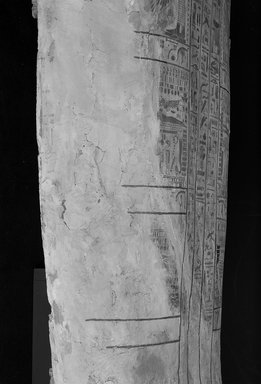
Coffin and Mummy Board of Pasebakhaemipet, ca. 1075–945 B.C.E. Wood, pigment, 12 5/8 x 21 5/8 x 76 3/8 in. (32 x 55 x 194 cm). Brooklyn Museum, Charles Edwin Wilbour Fund, 08.480.2a-c. Creative Commons-BY (Photo: Brooklyn Museum, CUR.08.480.2a_negE_bw.jpg)
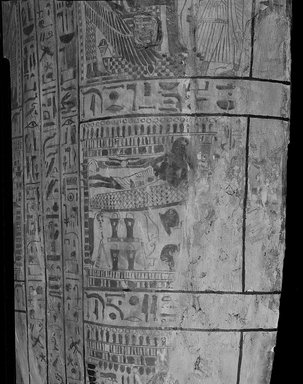
Coffin and Mummy Board of Pasebakhaemipet, ca. 1075–945 B.C.E. Wood, pigment, 12 5/8 x 21 5/8 x 76 3/8 in. (32 x 55 x 194 cm). Brooklyn Museum, Charles Edwin Wilbour Fund, 08.480.2a-c. Creative Commons-BY (Photo: Brooklyn Museum, CUR.08.480.2a_negF_bw.jpg)
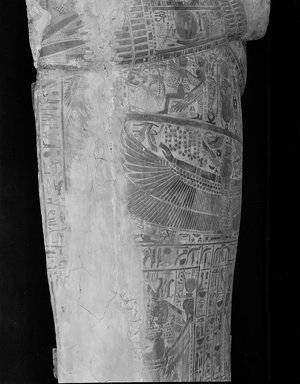
Coffin and Mummy Board of Pasebakhaemipet, ca. 1075–945 B.C.E. Wood, pigment, 12 5/8 x 21 5/8 x 76 3/8 in. (32 x 55 x 194 cm). Brooklyn Museum, Charles Edwin Wilbour Fund, 08.480.2a-c. Creative Commons-BY (Photo: Brooklyn Museum, CUR.08.480.2a_negG_bw.jpg)
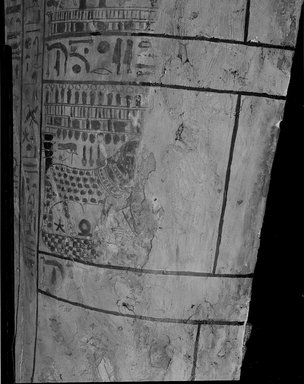
Coffin and Mummy Board of Pasebakhaemipet, ca. 1075–945 B.C.E. Wood, pigment, 12 5/8 x 21 5/8 x 76 3/8 in. (32 x 55 x 194 cm). Brooklyn Museum, Charles Edwin Wilbour Fund, 08.480.2a-c. Creative Commons-BY (Photo: Brooklyn Museum, CUR.08.480.2a_negH_bw.jpg)
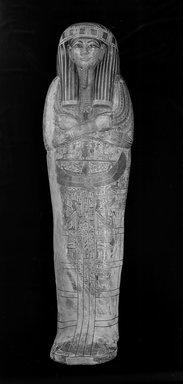
Coffin and Mummy Board of Pasebakhaemipet, ca. 1075–945 B.C.E. Wood, pigment, 12 5/8 x 21 5/8 x 76 3/8 in. (32 x 55 x 194 cm). Brooklyn Museum, Charles Edwin Wilbour Fund, 08.480.2a-c. Creative Commons-BY (Photo: Brooklyn Museum, CUR.08.480.2a_negI_bw.jpg)
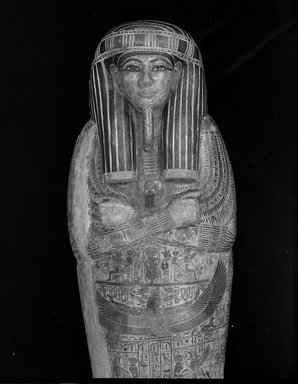
Coffin and Mummy Board of Pasebakhaemipet, ca. 1075–945 B.C.E. Wood, pigment, 12 5/8 x 21 5/8 x 76 3/8 in. (32 x 55 x 194 cm). Brooklyn Museum, Charles Edwin Wilbour Fund, 08.480.2a-c. Creative Commons-BY (Photo: Brooklyn Museum, CUR.08.480.2a_negJ_bw.jpg)
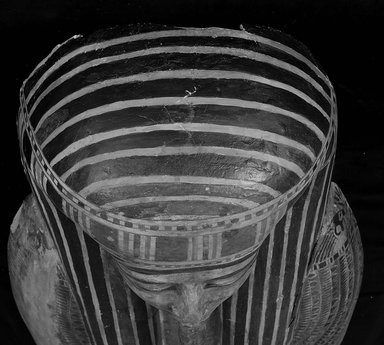
Coffin and Mummy Board of Pasebakhaemipet, ca. 1075–945 B.C.E. Wood, pigment, 12 5/8 x 21 5/8 x 76 3/8 in. (32 x 55 x 194 cm). Brooklyn Museum, Charles Edwin Wilbour Fund, 08.480.2a-c. Creative Commons-BY (Photo: Brooklyn Museum, CUR.08.480.2a_negK_bw.jpg)

Coffin and Mummy Board of Pasebakhaemipet, ca. 1075–945 B.C.E. Wood, pigment, 12 5/8 x 21 5/8 x 76 3/8 in. (32 x 55 x 194 cm). Brooklyn Museum, Charles Edwin Wilbour Fund, 08.480.2a-c. Creative Commons-BY (Photo: Brooklyn Museum, CUR.08.480.2a_negL_bw.jpg)

Coffin and Mummy Board of Pasebakhaemipet, ca. 1075–945 B.C.E. Wood, pigment, 12 5/8 x 21 5/8 x 76 3/8 in. (32 x 55 x 194 cm). Brooklyn Museum, Charles Edwin Wilbour Fund, 08.480.2a-c. Creative Commons-BY (Photo: Brooklyn Museum, CUR.08.480.2a_negM_bw.jpg)

Coffin and Mummy Board of Pasebakhaemipet, ca. 1075–945 B.C.E. Wood, pigment, 12 5/8 x 21 5/8 x 76 3/8 in. (32 x 55 x 194 cm). Brooklyn Museum, Charles Edwin Wilbour Fund, 08.480.2a-c. Creative Commons-BY (Photo: Brooklyn Museum, CUR.08.480.2b_negA_bw.jpg)

Coffin and Mummy Board of Pasebakhaemipet, ca. 1075–945 B.C.E. Wood, pigment, 12 5/8 x 21 5/8 x 76 3/8 in. (32 x 55 x 194 cm). Brooklyn Museum, Charles Edwin Wilbour Fund, 08.480.2a-c. Creative Commons-BY (Photo: Brooklyn Museum, CUR.08.480.2b_negB_bw.jpg)

Coffin and Mummy Board of Pasebakhaemipet, ca. 1075–945 B.C.E. Wood, pigment, 12 5/8 x 21 5/8 x 76 3/8 in. (32 x 55 x 194 cm). Brooklyn Museum, Charles Edwin Wilbour Fund, 08.480.2a-c. Creative Commons-BY (Photo: Brooklyn Museum, CUR.08.480.2b_negC_bw.jpg)
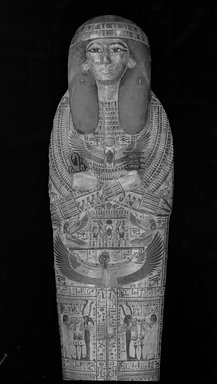
Coffin and Mummy Board of Pasebakhaemipet, ca. 1075–945 B.C.E. Wood, pigment, 12 5/8 x 21 5/8 x 76 3/8 in. (32 x 55 x 194 cm). Brooklyn Museum, Charles Edwin Wilbour Fund, 08.480.2a-c. Creative Commons-BY (Photo: Brooklyn Museum, CUR.08.480.2b_negD_bw.jpg)
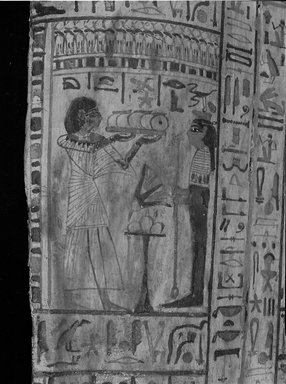
Coffin and Mummy Board of Pasebakhaemipet, ca. 1075–945 B.C.E. Wood, pigment, 12 5/8 x 21 5/8 x 76 3/8 in. (32 x 55 x 194 cm). Brooklyn Museum, Charles Edwin Wilbour Fund, 08.480.2a-c. Creative Commons-BY (Photo: Brooklyn Museum, CUR.08.480.2b_negE_bw.jpg)

Coffin and Mummy Board of Pasebakhaemipet, ca. 1075–945 B.C.E. Wood, pigment, 12 5/8 x 21 5/8 x 76 3/8 in. (32 x 55 x 194 cm). Brooklyn Museum, Charles Edwin Wilbour Fund, 08.480.2a-c. Creative Commons-BY (Photo: Brooklyn Museum, CUR.08.480.2b_negF_bw.jpg)

Coffin and Mummy Board of Pasebakhaemipet, ca. 1075–945 B.C.E. Wood, pigment, 12 5/8 x 21 5/8 x 76 3/8 in. (32 x 55 x 194 cm). Brooklyn Museum, Charles Edwin Wilbour Fund, 08.480.2a-c. Creative Commons-BY (Photo: Brooklyn Museum, CUR.08.480.2b_negG_bw.jpg)
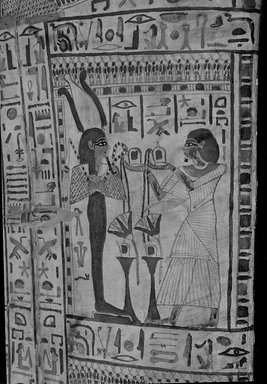
Coffin and Mummy Board of Pasebakhaemipet, ca. 1075–945 B.C.E. Wood, pigment, 12 5/8 x 21 5/8 x 76 3/8 in. (32 x 55 x 194 cm). Brooklyn Museum, Charles Edwin Wilbour Fund, 08.480.2a-c. Creative Commons-BY (Photo: Brooklyn Museum, CUR.08.480.2b_negH_bw.jpg)
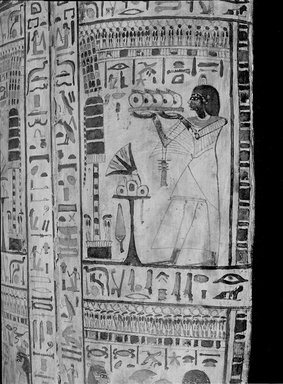
Coffin and Mummy Board of Pasebakhaemipet, ca. 1075–945 B.C.E. Wood, pigment, 12 5/8 x 21 5/8 x 76 3/8 in. (32 x 55 x 194 cm). Brooklyn Museum, Charles Edwin Wilbour Fund, 08.480.2a-c. Creative Commons-BY (Photo: Brooklyn Museum, CUR.08.480.2b_negI_bw.jpg)

Coffin and Mummy Board of Pasebakhaemipet, ca. 1075–945 B.C.E. Wood, pigment, 12 5/8 x 21 5/8 x 76 3/8 in. (32 x 55 x 194 cm). Brooklyn Museum, Charles Edwin Wilbour Fund, 08.480.2a-c. Creative Commons-BY (Photo: Brooklyn Museum, CUR.08.480.2b_negJ_bw.jpg)
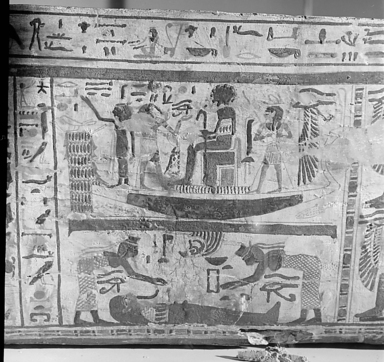
Coffin and Mummy Board of Pasebakhaemipet, ca. 1075–945 B.C.E. Wood, pigment, 12 5/8 x 21 5/8 x 76 3/8 in. (32 x 55 x 194 cm). Brooklyn Museum, Charles Edwin Wilbour Fund, 08.480.2a-c. Creative Commons-BY (Photo: Brooklyn Museum, CUR.08.480.2c_negE_bw.jpg)
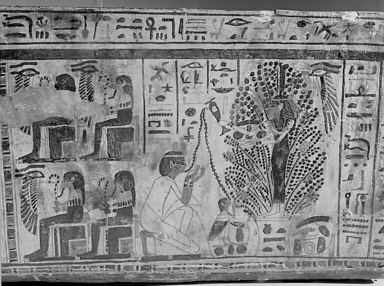
Coffin and Mummy Board of Pasebakhaemipet, ca. 1075–945 B.C.E. Wood, pigment, 12 5/8 x 21 5/8 x 76 3/8 in. (32 x 55 x 194 cm). Brooklyn Museum, Charles Edwin Wilbour Fund, 08.480.2a-c. Creative Commons-BY (Photo: Brooklyn Museum, CUR.08.480.2c_negF_bw.jpg)
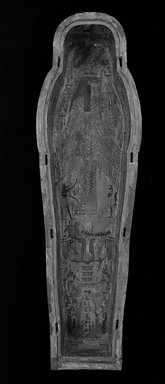
Coffin and Mummy Board of Pasebakhaemipet, ca. 1075–945 B.C.E. Wood, pigment, 12 5/8 x 21 5/8 x 76 3/8 in. (32 x 55 x 194 cm). Brooklyn Museum, Charles Edwin Wilbour Fund, 08.480.2a-c. Creative Commons-BY (Photo: Brooklyn Museum, CUR.08.480.2c_negK_bw.jpg)

Coffin and Mummy Board of Pasebakhaemipet, ca. 1075–945 B.C.E. Wood, pigment, 12 5/8 x 21 5/8 x 76 3/8 in. (32 x 55 x 194 cm). Brooklyn Museum, Charles Edwin Wilbour Fund, 08.480.2a-c. Creative Commons-BY (Photo: Brooklyn Museum, CUR.08.480.2a_lid_detail01_print_bw.jpg)
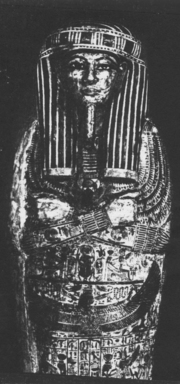
Coffin and Mummy Board of Pasebakhaemipet, ca. 1075–945 B.C.E. Wood, pigment, 12 5/8 x 21 5/8 x 76 3/8 in. (32 x 55 x 194 cm). Brooklyn Museum, Charles Edwin Wilbour Fund, 08.480.2a-c. Creative Commons-BY (Photo: Brooklyn Museum, CUR.08.480.2a_lid_detail02_print_bw.jpg)
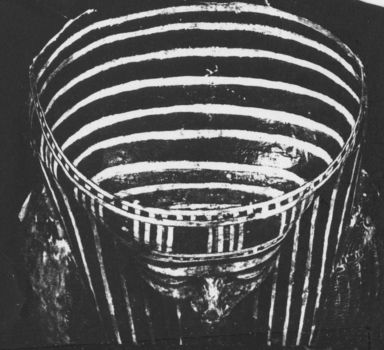
Coffin and Mummy Board of Pasebakhaemipet, ca. 1075–945 B.C.E. Wood, pigment, 12 5/8 x 21 5/8 x 76 3/8 in. (32 x 55 x 194 cm). Brooklyn Museum, Charles Edwin Wilbour Fund, 08.480.2a-c. Creative Commons-BY (Photo: Brooklyn Museum, CUR.08.480.2a_lid_detail03_print_bw.jpg)
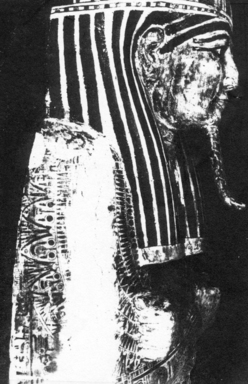
Coffin and Mummy Board of Pasebakhaemipet, ca. 1075–945 B.C.E. Wood, pigment, 12 5/8 x 21 5/8 x 76 3/8 in. (32 x 55 x 194 cm). Brooklyn Museum, Charles Edwin Wilbour Fund, 08.480.2a-c. Creative Commons-BY (Photo: Brooklyn Museum, CUR.08.480.2a_lid_detail04_print_bw.jpg)
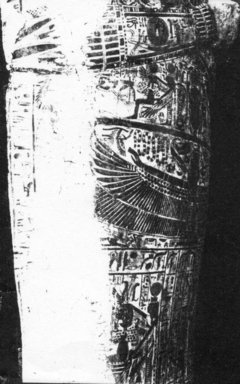
Coffin and Mummy Board of Pasebakhaemipet, ca. 1075–945 B.C.E. Wood, pigment, 12 5/8 x 21 5/8 x 76 3/8 in. (32 x 55 x 194 cm). Brooklyn Museum, Charles Edwin Wilbour Fund, 08.480.2a-c. Creative Commons-BY (Photo: Brooklyn Museum, CUR.08.480.2a_lid_detail05_print_bw.jpg)

Coffin and Mummy Board of Pasebakhaemipet, ca. 1075–945 B.C.E. Wood, pigment, 12 5/8 x 21 5/8 x 76 3/8 in. (32 x 55 x 194 cm). Brooklyn Museum, Charles Edwin Wilbour Fund, 08.480.2a-c. Creative Commons-BY (Photo: Brooklyn Museum, CUR.08.480.2a_lid_detail06_print_bw.jpg)
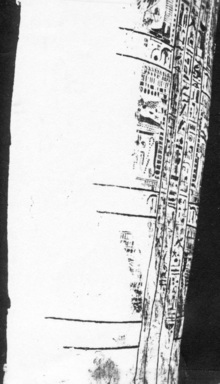
Coffin and Mummy Board of Pasebakhaemipet, ca. 1075–945 B.C.E. Wood, pigment, 12 5/8 x 21 5/8 x 76 3/8 in. (32 x 55 x 194 cm). Brooklyn Museum, Charles Edwin Wilbour Fund, 08.480.2a-c. Creative Commons-BY (Photo: Brooklyn Museum, CUR.08.480.2a_lid_detail07_print_bw.jpg)

Coffin and Mummy Board of Pasebakhaemipet, ca. 1075–945 B.C.E. Wood, pigment, 12 5/8 x 21 5/8 x 76 3/8 in. (32 x 55 x 194 cm). Brooklyn Museum, Charles Edwin Wilbour Fund, 08.480.2a-c. Creative Commons-BY (Photo: Brooklyn Museum, CUR.08.480.2a_lid_detail08_print_bw.jpg)
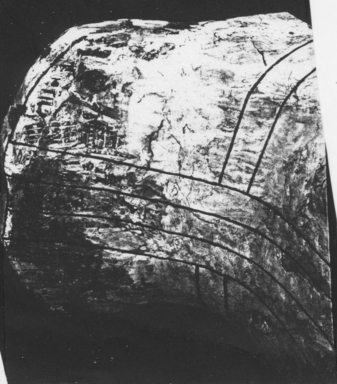
Coffin and Mummy Board of Pasebakhaemipet, ca. 1075–945 B.C.E. Wood, pigment, 12 5/8 x 21 5/8 x 76 3/8 in. (32 x 55 x 194 cm). Brooklyn Museum, Charles Edwin Wilbour Fund, 08.480.2a-c. Creative Commons-BY (Photo: Brooklyn Museum, CUR.08.480.2a_lid_detail09_print_bw.jpg)
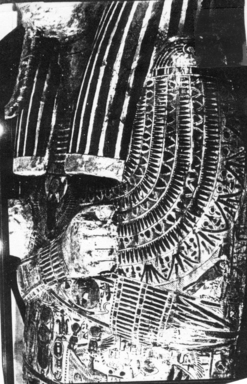
Coffin and Mummy Board of Pasebakhaemipet, ca. 1075–945 B.C.E. Wood, pigment, 12 5/8 x 21 5/8 x 76 3/8 in. (32 x 55 x 194 cm). Brooklyn Museum, Charles Edwin Wilbour Fund, 08.480.2a-c. Creative Commons-BY (Photo: Brooklyn Museum, CUR.08.480.2a_lid_detail10_print_bw.jpg)

Coffin and Mummy Board of Pasebakhaemipet, ca. 1075–945 B.C.E. Wood, pigment, 12 5/8 x 21 5/8 x 76 3/8 in. (32 x 55 x 194 cm). Brooklyn Museum, Charles Edwin Wilbour Fund, 08.480.2a-c. Creative Commons-BY (Photo: Brooklyn Museum, CUR.08.480.2a_lid_detail11_print_bw.jpg)
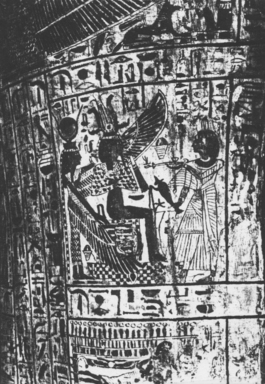
Coffin and Mummy Board of Pasebakhaemipet, ca. 1075–945 B.C.E. Wood, pigment, 12 5/8 x 21 5/8 x 76 3/8 in. (32 x 55 x 194 cm). Brooklyn Museum, Charles Edwin Wilbour Fund, 08.480.2a-c. Creative Commons-BY (Photo: Brooklyn Museum, CUR.08.480.2a_lid_detail12_print_bw.jpg)
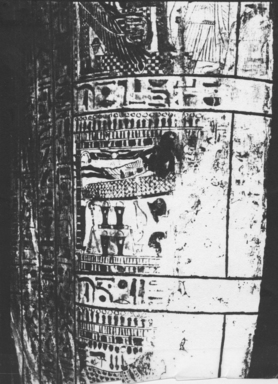
Coffin and Mummy Board of Pasebakhaemipet, ca. 1075–945 B.C.E. Wood, pigment, 12 5/8 x 21 5/8 x 76 3/8 in. (32 x 55 x 194 cm). Brooklyn Museum, Charles Edwin Wilbour Fund, 08.480.2a-c. Creative Commons-BY (Photo: Brooklyn Museum, CUR.08.480.2a_lid_detail13_print_bw.jpg)
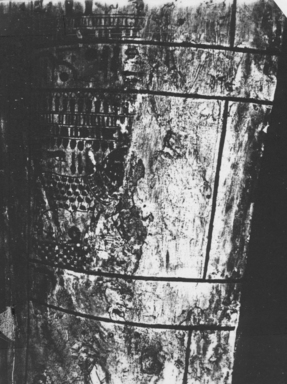
Coffin and Mummy Board of Pasebakhaemipet, ca. 1075–945 B.C.E. Wood, pigment, 12 5/8 x 21 5/8 x 76 3/8 in. (32 x 55 x 194 cm). Brooklyn Museum, Charles Edwin Wilbour Fund, 08.480.2a-c. Creative Commons-BY (Photo: Brooklyn Museum, CUR.08.480.2a_lid_detail14_print_bw.jpg)
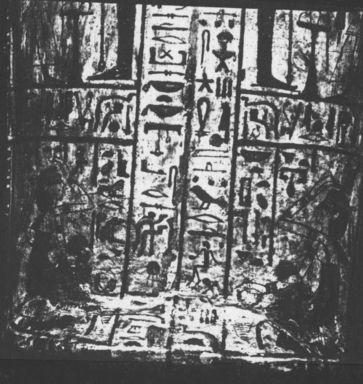
Coffin and Mummy Board of Pasebakhaemipet, ca. 1075–945 B.C.E. Wood, pigment, 12 5/8 x 21 5/8 x 76 3/8 in. (32 x 55 x 194 cm). Brooklyn Museum, Charles Edwin Wilbour Fund, 08.480.2a-c. Creative Commons-BY (Photo: Brooklyn Museum, CUR.08.480.2a_lid_detail15_print_bw.jpg)

Coffin and Mummy Board of Pasebakhaemipet, ca. 1075–945 B.C.E. Wood, pigment, 12 5/8 x 21 5/8 x 76 3/8 in. (32 x 55 x 194 cm). Brooklyn Museum, Charles Edwin Wilbour Fund, 08.480.2a-c. Creative Commons-BY (Photo: Brooklyn Museum, CUR.08.480.2b_board_detail01_print_bw.jpg)
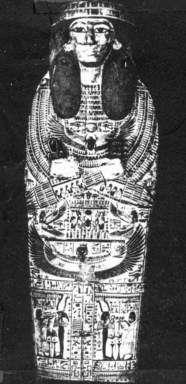
Coffin and Mummy Board of Pasebakhaemipet, ca. 1075–945 B.C.E. Wood, pigment, 12 5/8 x 21 5/8 x 76 3/8 in. (32 x 55 x 194 cm). Brooklyn Museum, Charles Edwin Wilbour Fund, 08.480.2a-c. Creative Commons-BY (Photo: Brooklyn Museum, CUR.08.480.2b_board_detail02_print_bw.jpg)
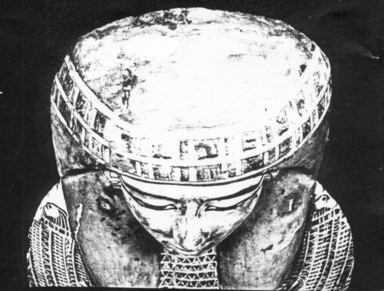
Coffin and Mummy Board of Pasebakhaemipet, ca. 1075–945 B.C.E. Wood, pigment, 12 5/8 x 21 5/8 x 76 3/8 in. (32 x 55 x 194 cm). Brooklyn Museum, Charles Edwin Wilbour Fund, 08.480.2a-c. Creative Commons-BY (Photo: Brooklyn Museum, CUR.08.480.2b_board_detail03_print_bw.jpg)
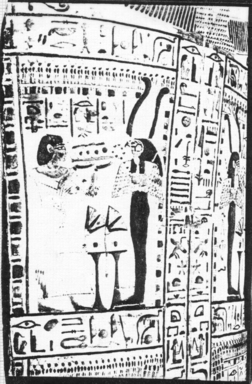
Coffin and Mummy Board of Pasebakhaemipet, ca. 1075–945 B.C.E. Wood, pigment, 12 5/8 x 21 5/8 x 76 3/8 in. (32 x 55 x 194 cm). Brooklyn Museum, Charles Edwin Wilbour Fund, 08.480.2a-c. Creative Commons-BY (Photo: Brooklyn Museum, CUR.08.480.2b_board_detail04_print_bw.jpg)
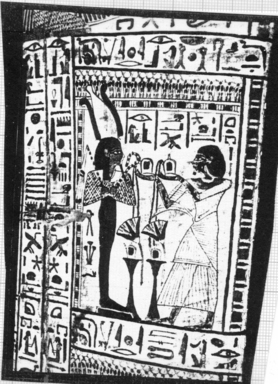
Coffin and Mummy Board of Pasebakhaemipet, ca. 1075–945 B.C.E. Wood, pigment, 12 5/8 x 21 5/8 x 76 3/8 in. (32 x 55 x 194 cm). Brooklyn Museum, Charles Edwin Wilbour Fund, 08.480.2a-c. Creative Commons-BY (Photo: Brooklyn Museum, CUR.08.480.2b_board_detail05_print_bw.jpg)

Coffin and Mummy Board of Pasebakhaemipet, ca. 1075–945 B.C.E. Wood, pigment, 12 5/8 x 21 5/8 x 76 3/8 in. (32 x 55 x 194 cm). Brooklyn Museum, Charles Edwin Wilbour Fund, 08.480.2a-c. Creative Commons-BY (Photo: Brooklyn Museum, CUR.08.480.2b_board_detail06_print_bw.jpg)

Coffin and Mummy Board of Pasebakhaemipet, ca. 1075–945 B.C.E. Wood, pigment, 12 5/8 x 21 5/8 x 76 3/8 in. (32 x 55 x 194 cm). Brooklyn Museum, Charles Edwin Wilbour Fund, 08.480.2a-c. Creative Commons-BY (Photo: Brooklyn Museum, CUR.08.480.2b_board_detail07_print_bw.jpg)
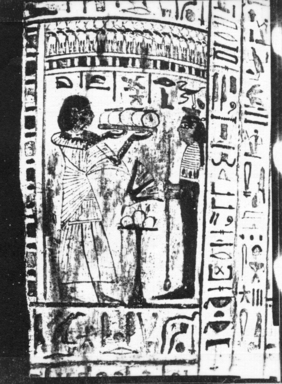
Coffin and Mummy Board of Pasebakhaemipet, ca. 1075–945 B.C.E. Wood, pigment, 12 5/8 x 21 5/8 x 76 3/8 in. (32 x 55 x 194 cm). Brooklyn Museum, Charles Edwin Wilbour Fund, 08.480.2a-c. Creative Commons-BY (Photo: Brooklyn Museum, CUR.08.480.2b_board_detail08_print_bw.jpg)
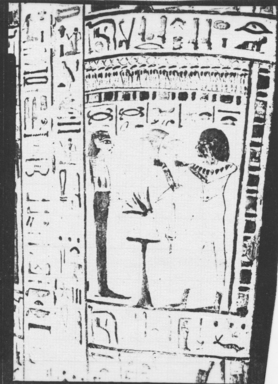
Coffin and Mummy Board of Pasebakhaemipet, ca. 1075–945 B.C.E. Wood, pigment, 12 5/8 x 21 5/8 x 76 3/8 in. (32 x 55 x 194 cm). Brooklyn Museum, Charles Edwin Wilbour Fund, 08.480.2a-c. Creative Commons-BY (Photo: Brooklyn Museum, CUR.08.480.2b_board_detail09_print_bw.jpg)
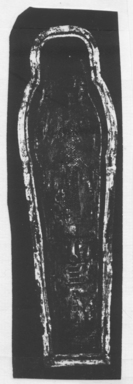
Coffin and Mummy Board of Pasebakhaemipet, ca. 1075–945 B.C.E. Wood, pigment, 12 5/8 x 21 5/8 x 76 3/8 in. (32 x 55 x 194 cm). Brooklyn Museum, Charles Edwin Wilbour Fund, 08.480.2a-c. Creative Commons-BY (Photo: Brooklyn Museum, CUR.08.480.2c_box_detail01_print_bw.jpg)
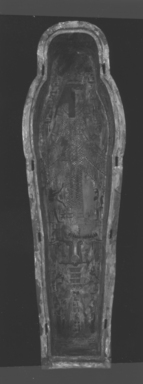
Coffin and Mummy Board of Pasebakhaemipet, ca. 1075–945 B.C.E. Wood, pigment, 12 5/8 x 21 5/8 x 76 3/8 in. (32 x 55 x 194 cm). Brooklyn Museum, Charles Edwin Wilbour Fund, 08.480.2a-c. Creative Commons-BY (Photo: Brooklyn Museum, CUR.08.480.2c_box_detail02_print_bw.jpg)
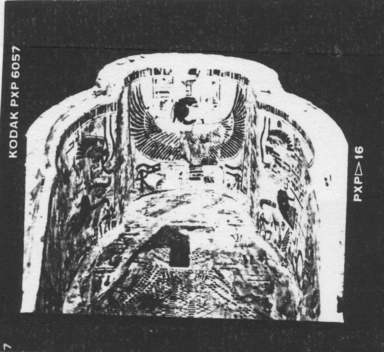
Coffin and Mummy Board of Pasebakhaemipet, ca. 1075–945 B.C.E. Wood, pigment, 12 5/8 x 21 5/8 x 76 3/8 in. (32 x 55 x 194 cm). Brooklyn Museum, Charles Edwin Wilbour Fund, 08.480.2a-c. Creative Commons-BY (Photo: Brooklyn Museum, CUR.08.480.2c_box_detail03_print_bw.jpg)

Coffin and Mummy Board of Pasebakhaemipet, ca. 1075–945 B.C.E. Wood, pigment, 12 5/8 x 21 5/8 x 76 3/8 in. (32 x 55 x 194 cm). Brooklyn Museum, Charles Edwin Wilbour Fund, 08.480.2a-c. Creative Commons-BY (Photo: Brooklyn Museum, CUR.08.480.2c_box_detail04_print_bw.jpg)

Coffin and Mummy Board of Pasebakhaemipet, ca. 1075–945 B.C.E. Wood, pigment, 12 5/8 x 21 5/8 x 76 3/8 in. (32 x 55 x 194 cm). Brooklyn Museum, Charles Edwin Wilbour Fund, 08.480.2a-c. Creative Commons-BY (Photo: Brooklyn Museum, CUR.08.480.2c_box_detail05_print_bw.jpg)
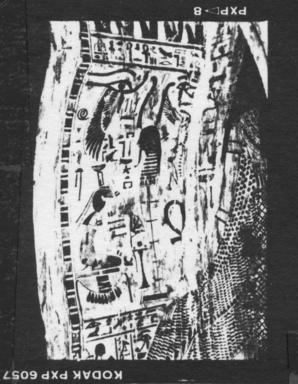
Coffin and Mummy Board of Pasebakhaemipet, ca. 1075–945 B.C.E. Wood, pigment, 12 5/8 x 21 5/8 x 76 3/8 in. (32 x 55 x 194 cm). Brooklyn Museum, Charles Edwin Wilbour Fund, 08.480.2a-c. Creative Commons-BY (Photo: Brooklyn Museum, CUR.08.480.2c_box_detail06_print_bw.jpg)
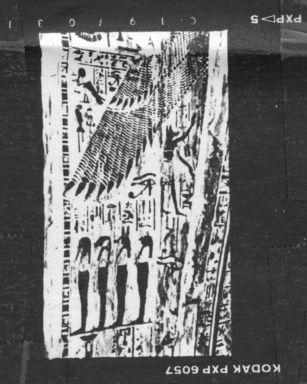
Coffin and Mummy Board of Pasebakhaemipet, ca. 1075–945 B.C.E. Wood, pigment, 12 5/8 x 21 5/8 x 76 3/8 in. (32 x 55 x 194 cm). Brooklyn Museum, Charles Edwin Wilbour Fund, 08.480.2a-c. Creative Commons-BY (Photo: Brooklyn Museum, CUR.08.480.2c_box_detail07_print_bw.jpg)

Coffin and Mummy Board of Pasebakhaemipet, ca. 1075–945 B.C.E. Wood, pigment, 12 5/8 x 21 5/8 x 76 3/8 in. (32 x 55 x 194 cm). Brooklyn Museum, Charles Edwin Wilbour Fund, 08.480.2a-c. Creative Commons-BY (Photo: Brooklyn Museum, CUR.08.480.2c_box_detail08_print_bw.jpg)
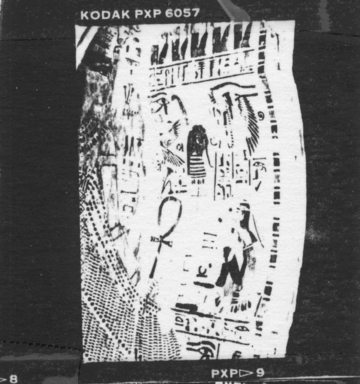
Coffin and Mummy Board of Pasebakhaemipet, ca. 1075–945 B.C.E. Wood, pigment, 12 5/8 x 21 5/8 x 76 3/8 in. (32 x 55 x 194 cm). Brooklyn Museum, Charles Edwin Wilbour Fund, 08.480.2a-c. Creative Commons-BY (Photo: Brooklyn Museum, CUR.08.480.2c_box_detail09_print_bw.jpg)
Coffin and Mummy Board of Pasebakhaemipet
Egyptian, Classical, Ancient Near Eastern Art
On View: Funerary Gallery 2, Martha A. and Robert S. Rubin Gallery, 3rd Floor
The lid of this coffin shows Osiris, the god of the dead, depicted multiple times; Nut, the sky goddess; and, on the interior, the goddess of the afterlife—three deities who together create a miniature universe for the mummy to inhabit. The outsides of the box depict the deceased’s journey to the afterlife, including the final judgment by weighing his heart against the feather of truth, while the mummy board shows him as a living presence arrived in the next world.
Carbon-14 dating conducted in 2009 indicates that Pasebakhaienipet, who was the mayor of Thebes, died between 1110 and 939 B.C.E., a date supported by the Twenty-first Dynasty style of his coffin. His elaborate coffin and mummification in the most expensive style suggest his high status in Egyptian society.
